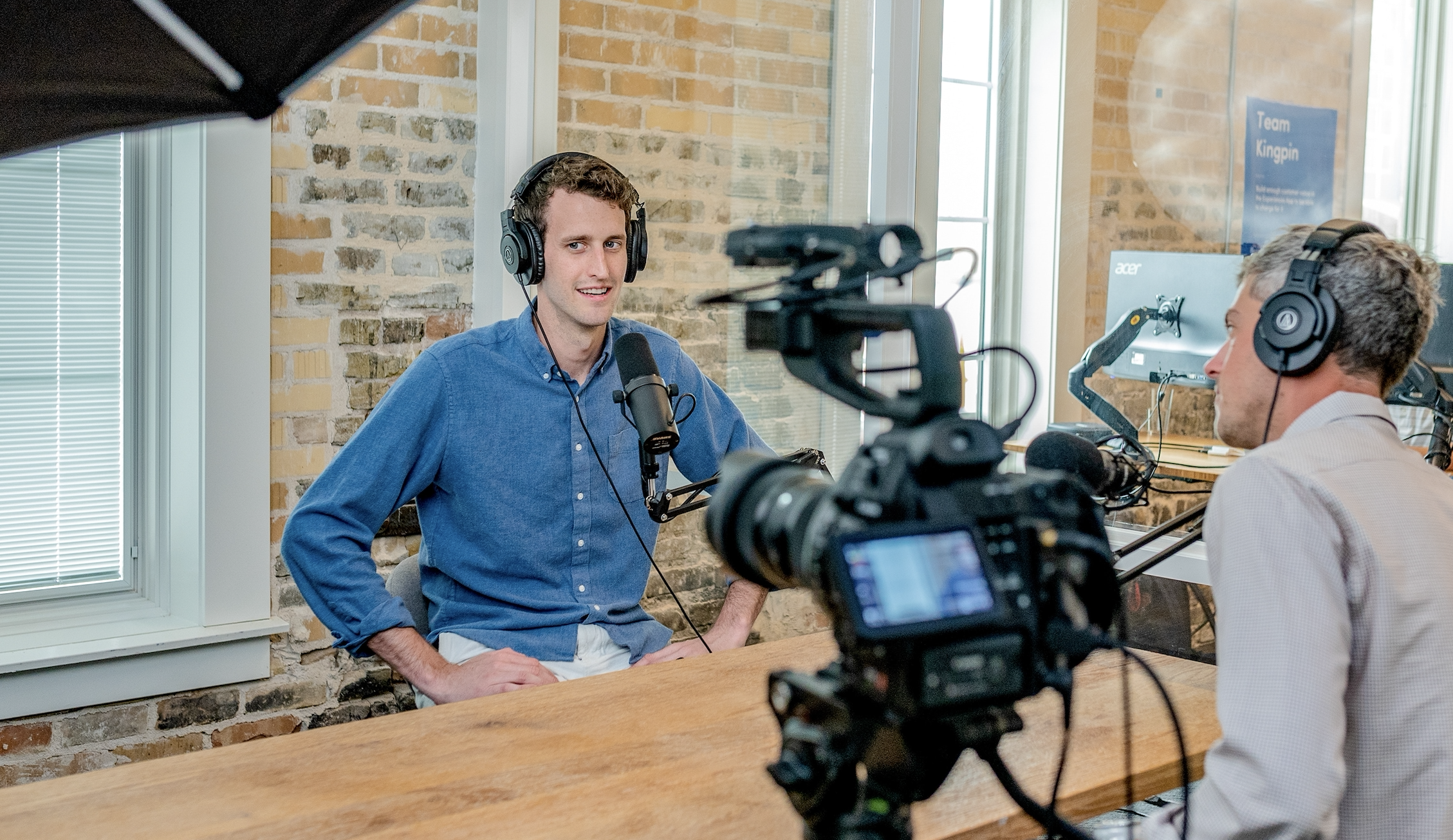
If you’re familiar with LinkedIn and its ever-changing algorithms, you’ll know that even reaching your audience of followers can be a challenge, let alone trying to engage a wider audience outside of your network.
Of course, LinkedIn isn’t trying to make your life difficult.
The algorithms are put in place for the user’s benefit to reduce the spread of spam/inappropriate content and to ensure that what you’re seeing is most appealing to you.
In fact, the most recent major update to the algorithm was put in place to broaden engagement.
LinkedIn was seeing a disproportionate amount of engagement going to its “top users,” which left those with fewer followers in the dust.
Despite this, it does mean that you’ll have to work extra hard and pay close attention to detail if you want your content to fulfill its potential by driving maximum reach and engagement.
Here are a few of our top tips for optimizing LinkedIn posts that will help them rank a bit higher, to get the views and engagement they deserve.
Without further ado, here’s how to optimize LinkedIn posts for maximum engagement!

1. Make Images Fit
If it’s just the image you’re sharing, then don’t fret, this doesn’t apply to you. No, the images that people have the most trouble with are the ones that accompany the links that we share.
LinkedIn pulls default preview images from sites when you attempt to share a link, but they don’t always crop how you might like them to.
Fear not, as LinkedIn gives you the option to change or customize the image that you want to accompany the link you’re sharing.
You’ve just finished writing a blog post, and you believe it to be your most exceptional work to date.
Doesn’t it make sense to take time to find an image that fits and looks professional?
Sites like Unsplash offer a huge (and free) catalog of high-quality, professional photos for you to use.
If you’re unsure of LinkedIn’s image spec guidelines, check out our ultimate guide to social media sizes!

2. Use Hashtags
Unless you’ve been living under a rock for the past ten years, you should already be relatively well acquainted with the humble hashtag.
Hashtags are used to identify and segment content on specific topics.
So, for example, if you’re sharing an article about Tesla, you may want to include #Tesla or #ElonMusk when you share.
At one time, LinkedIn was adamant that hashtags were of no use within the platform, and advised that users do not include them in their posts.
Times have since changed, and LinkedIn now actively encourages and supports the use of hashtags, as they can now be searched and followed.
People use hashtags to ensure that people who are searching for content on a particular topic can find their posts quickly and easily.

3. Tag Companies and Users
If you’re writing or sharing a post about a particular company, it would be a good idea to tag them in it.
Companies, especially smaller companies, will be trawling social media to find content that mentions them, whether to do a spot of social listening or to engage in conversations.
If companies see that you are talking about them, they may do you the favor of sharing your post onto their feed if it suits their brand.
This will massively impact your reach! If your post is broadcast to the many followers of said company’s corporate account, you should ultimately see a significant increase in engagement.
Similarly, if you are to tag other users in your post, they may be inclined to share the post with their professional network, opening your post up to a broader audience.
Even as much as a like can greatly increase your chances of making it to the feeds of their followers.

4. Proofreading Is Essential!
Proofread everything.
It’s important to remember that LinkedIn is a platform designed by professionals for professionals, and how you choose to convey yourself on the platform determines how people view your personal brand.
If your posts are full of spelling and grammatical errors, you’ll damage both your credibility and engagement rates.
Remember that first impressions can be crucial in your interactions, so you want to come across as the business professional that you are.
‘Your grammar is a reflection of your image. Good or bad, you have made an impression. And like all impressions, you are in total control.’ – Jeffrey Gitomer
If you’re using Apple products, you can use one of Siri’s most undervalued features to check for spelling errors, but also to see how your post reads.
On a MacBook, simply highlight the text you want read, then press ‘Option + Esc’ to hear it read back to you.
This will save you having to pester colleagues/friends for proofreads every time you finish a post or article!
An online grammar checker and proofreading tool like Grammarly can help avoid embarrassing errors in your writing.
Grammarly is a writing tool that enables you to check for both spelling and grammatical errors. Across both free and premium versions, Grammarly has 6.9 million daily users, including both casual and professional writers, so be sure not to fall short of the growing standard.

5. How To Optimize All-Text Posts on LinkedIn
As previously mentioned, all-text posts perform particularly well in beating LinkedIn’s algorithm, as the platform scores them highly compared to posts with external links.
You must know how to best utilize this high-scoring feature by optimizing all-text posts on LinkedIn.
LinkedIn is much more generous than other major social media platforms, as it allows a whopping 1300 characters per post, giving you much more room to showcase your thoughts.
However, it’s essential that you treat the first 2-3 lines as you might an article subheading or the first few lines of an essay, and ensure that it is as engaging as possible to entice readers to read the whole body of text.
Posts longer than 140 characters will be partially hidden and given LinkedIn’s ‘See more’ button.
If your post is long, but you believe it to be full of value, consider bullet pointing the main points so that it is easily digested by the reader.
Highlighting the key takeaways is perfect for those who skim-read your post.
Need more advice for optimizing text posts on LinkedIn?
We’ve got you.
Check out our guide on how to write the perfect LinkedIn post for our top tips!
Share Personal Experiences
That’s right, we said it.
We are, of course, all too familiar with the “this is one for Facebook” comments on LinkedIn.
However, there is a way to share your personal experiences on LinkedIn while still keeping it professional and work-relevant.
Past studies have shown that all-text posts can rank significantly higher than those that include links.
Making it personal is a fantastic way to leverage this while still adding considerable value.
Try to be positive and as relatable as possible.
Motivational posts tend to perform better due to the work-oriented nature of the platform.
It also humanizes the process of posting and growing your personal brand. LinkedIn content has something of an emotionally stale reputation, we want to challenge this!

6. How to Use Emojis Effectively
Emojis can be a somewhat polarizing topic in the professional landscape.
Still, the fact remains that they are an excellent way to convey a specific tone of voice in written communications.
Not only do they help convey a message, but they are also undeniably colorful and eye-catching!
It’s essential to know your audience when considering whether to use emojis and which emojis to use.
Use emojis correctly, and it becomes a powerful way to appear “in the know,” and can better convey your message and increase engagement.
However, misusing emojis and going for overkill can quickly remove your credibility and appear unprofessional, if not spammy.
“Brands who fail to understand the proper context are likely to find themselves the butt of the joke in discussions such as those that take place on Reddit’s “fellow kids” subreddit … knowledge of the target audience is essential.” – Pratik Dholakiya (Marketing consultant)
We recommend that you embrace the go-to-emojis where appropriate.
Emojipedia lists the current most commonly used emojis, and segments this into yearly reports.
For companies, tapping into the most common/acceptable emojis is a safe bet, and can be a brilliantly useful way of improving relatability with your audience.
This goes for internal communications with your team too. Perhaps not everyone will be familiar with your witty humor, so you may want to throw in the odd laughing emoji to convey this!

7. Optimize Video Posts
Though LinkedIn’s algorithm seems to favor all-text posts, visual content is king in the eyes of other users as it is quick and easy to digest.
Remember that many people prefer to learn with visual stimuli! Though research suggests that there is no such thing as ‘visual’ and ‘auditory’ learners, consider what will be most appealing for users.
Bear in mind that the majority of people accessing LinkedIn will be doing so during working hours and are time-conscious. Make your LinkedIn videos short and easily digestible!
Because people will be viewing content at work, or even on the go, it’s essential that you add subtitles to your videos to ensure that the content can be understood without sound. Subtitles make your content accessible to deaf LinkedIn users too.
Native videos will rank higher on LinkedIn than external video links.
Linking to videos on YouTube or Vimeo rather than uploading them directly to LinkedIn can downgrade your post and reduce its visibility.
LinkedIn Videos can be up to ten minutes long… but think about the last time you had ten minutes to spare on watching a video at work.
Then decide how long your video should be (hint: around ninety seconds is optimum for maximum engagement).
Sadly, there is no secret formula for ensuring that your posts are always visible and drive engagement.
LinkedIn’s constantly (and often unannounced) changes to their algorithm make it challenging to know what works best.
However, for now, we’ll let the studies and statistics do the talking and abide accordingly.
We anticipate LinkedIn will change things up again in no time, but until then, these tips should ensure you’re always doing your best to ensure your content generates engagement.
Have you considered that your employees might be your most valuable asset for generating engagement on your company content?
Ready to get started with employee advocacy?
Prefer to speak with us first?
No problem.
Schedule a call with one of the team.
Lewis Gray
Senior Marketing Manager and Employee Advocacy Program Manager at DSMN8. Lewis specialises in content strategy, growing brand visibility and generating inbound leads. His background in Sales lends itself well to demand generation in the B2B niche.


